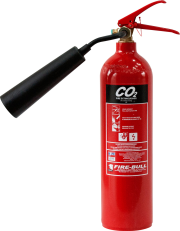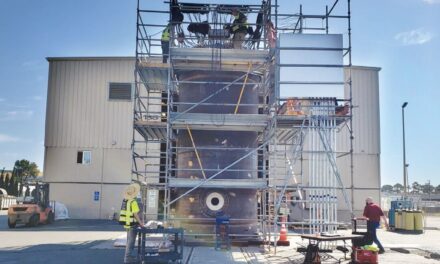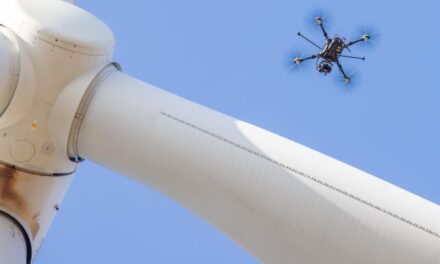Every business in the UK is required to carry out a fire risk assessment, have appropriate fire extinguishers in place, and ensure regular servicing.
With the obvious consequences of fire resulting in significant risk of injury to people and property, it means that legislation is strict and failure to comply is not an option.
Many businesses choose to delegate their fire safety maintenance and compliance to fire safety specialists but companies on a site or in the workplace may not know the difference between each type of fire extinguisher.
Bradley Markham, managing director at Bull Products explains what every site worker should know about fire extinguishers, and the different types to use depending on the situation on site.
Labels – Staff should be aware of the fire classification system (Class A-F) grades for each type of fire according to the combustible materials involved.
The colour-coded labelling that corresponds to the universal fire classification system has been created so that emergency fire responders are able to swiftly select the type of extinguisher required to tackle each type of blaze.
One fire extinguisher doesn’t put out all fires – There’s no such thing as a universal fire extinguisher, and no single fire extinguisher can be used for every type of fire.
Different materials burn in different ways, posing different hazards and demanding different responses. Having the right extinguishers for the environment and the risks involved are essential. Here are the different types of fire extinguishers companies can use:
1. Water fire extinguishers
- Usually one of the most common extinguishers found on site.
- Colour-coded red and/or white
- Should be used for Class A fires that involve materials such as paper, wood, soft furnishings and plastic. Water fire extinguishers work by soaking and cooling the burning materials.
- If you are tackling an electrical fire, or burning fat or oil, water extinguishers are unsuitable. However water extinguishers with chemical additives increase the effectiveness of the extinguisher to provide additional fire-fighting power.
2. Foam extinguishers
- Labels are colour-coded cream.
- Foam extinguishers can be for Class A and B fires involving paper, wood, cloth or plastic, and flammable liquids including paraffin, petrol and oil.
- Foam fire extinguishers smother the fire with a foam film, starving the fire of oxygen whilst also cooling the burning materials.
- Much more versatile than water fire extinguishers, foam extinguishers are typically safer should the foam come into contact with live electricity.
3. Powder extinguishers
- Colour-coded with a bright blue label.
- ABC powder extinguishers, or dry powder extinguishers are multi-purpose extinguishers that can fight Class A, B and C fires – solids, flammable liquids and flammable gases.
- There are some additional hazards staff should be aware of including inhalation risks (they should never be used in small spaces), limitations to vision, and the risk of the fire reigniting. Plus, powder extinguishers leave messy residue, making the clean-up operation an even greater challenge.
4. CO2 extinguishers
- Colour-coded black and includes a horn for increased safety during use.
- Suitable for Class E fires involving electrical equipment as well as Class B liquid fires. Carbon dioxide suffocates the fire leaving no residue, unlike foam.
- If there is an electrical fire, it is important to eliminate the source of the fire (e.g. by cooling the source or turning off the power supply in the case of electrical fires) to prevent the fire from reigniting.
- Your staff should ensure they ventilate the area as soon as the fire is under control in order to prevent asphyxiation.
5. Specialist wet chemical extinguishers
- Colour-coded canary yellow.
- Mainly used in catering or cooking areas and used for Class F fires cooking oils and fats.
Although many staff have worked on numerous sites and are likely to have seen or come into contact with each of the above extinguishers, we recommend:
- Regular reminder sessions into which extinguisher should be used for each type fire, should it occur on site.
- Training and advice on how to operate extinguishers safely.
For more information about Bull Products, visit www.bullproducts.co.uk



